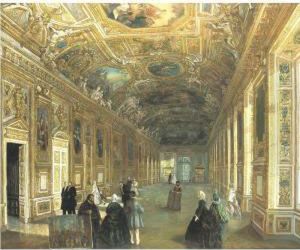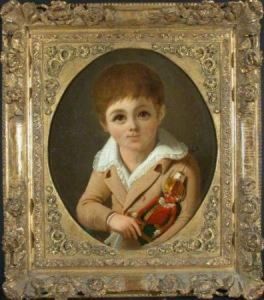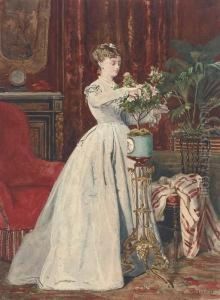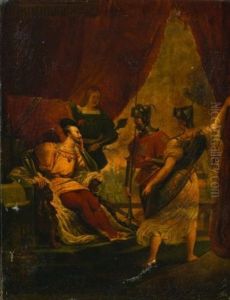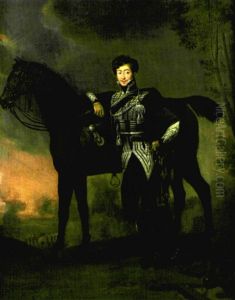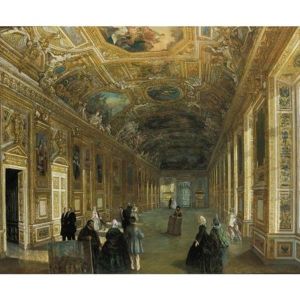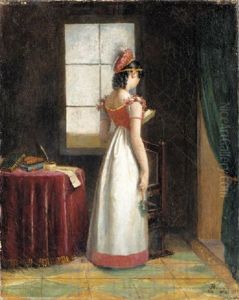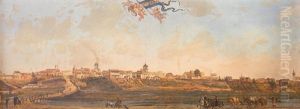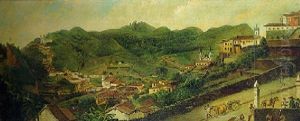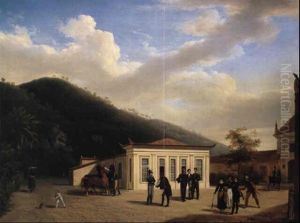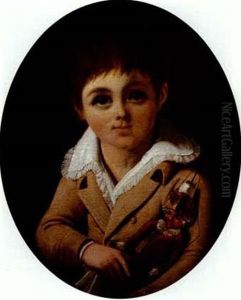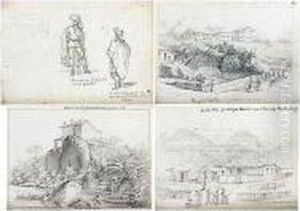Armand Julien Palliere Paintings
Armand Julien Palliere was a French artist born on October 14, 1784, in Bordeaux, France. Coming from a background where his father was a minor painter and decorator, Palliere was immersed in the world of art from an early age. His early education and formative years were spent under the guidance of Pierre Lacour and later Jean-Baptiste Regnault, two prominent figures in the French art scene of the time. These early influences were crucial in shaping Palliere's artistic direction, which would later be recognized for its classical and neoclassical elements, imbued with a sense of romanticism.
In the early 19th century, Palliere decided to travel, a decision that significantly impacted his career and artistic style. He moved to Rio de Janeiro, Brazil, in 1812, a period when the Portuguese Royal Family had relocated there due to the Napoleonic wars in Europe. This move was pivotal for Palliere, as it opened up new opportunities and exposed him to a diverse cultural landscape. He became one of the pioneering European artists to settle in Brazil, contributing significantly to the local art scene and influencing a generation of Brazilian artists.
During his time in Brazil, Palliere engaged in various projects, including religious and portrait painting, which garnered him considerable acclaim. His works during this period reflected a blend of his European training with the vibrant culture and scenic beauty of Brazil. Notably, his painting 'A First Mass in Brazil' became one of his most celebrated works, capturing a historical moment with a romantic flair that resonated with both Brazilian and European audiences.
Palliere's contribution to the arts extended beyond his paintings. He was instrumental in the establishment of art institutions in Brazil and played a significant role in the cultural exchange between Brazil and Europe during his time. Despite facing challenges and periods of obscurity, his legacy endures, particularly in Brazil, where he is remembered as a key figure in the country's art history.
Armand Julien Palliere passed away on September 14, 1862, in Rio de Janeiro. His body of work continues to be studied and admired for its historical significance and artistic beauty. Through his journey from France to Brazil, Palliere exemplifies the role of the artist as a cultural ambassador, bridging continents and cultures through the universal language of art.
